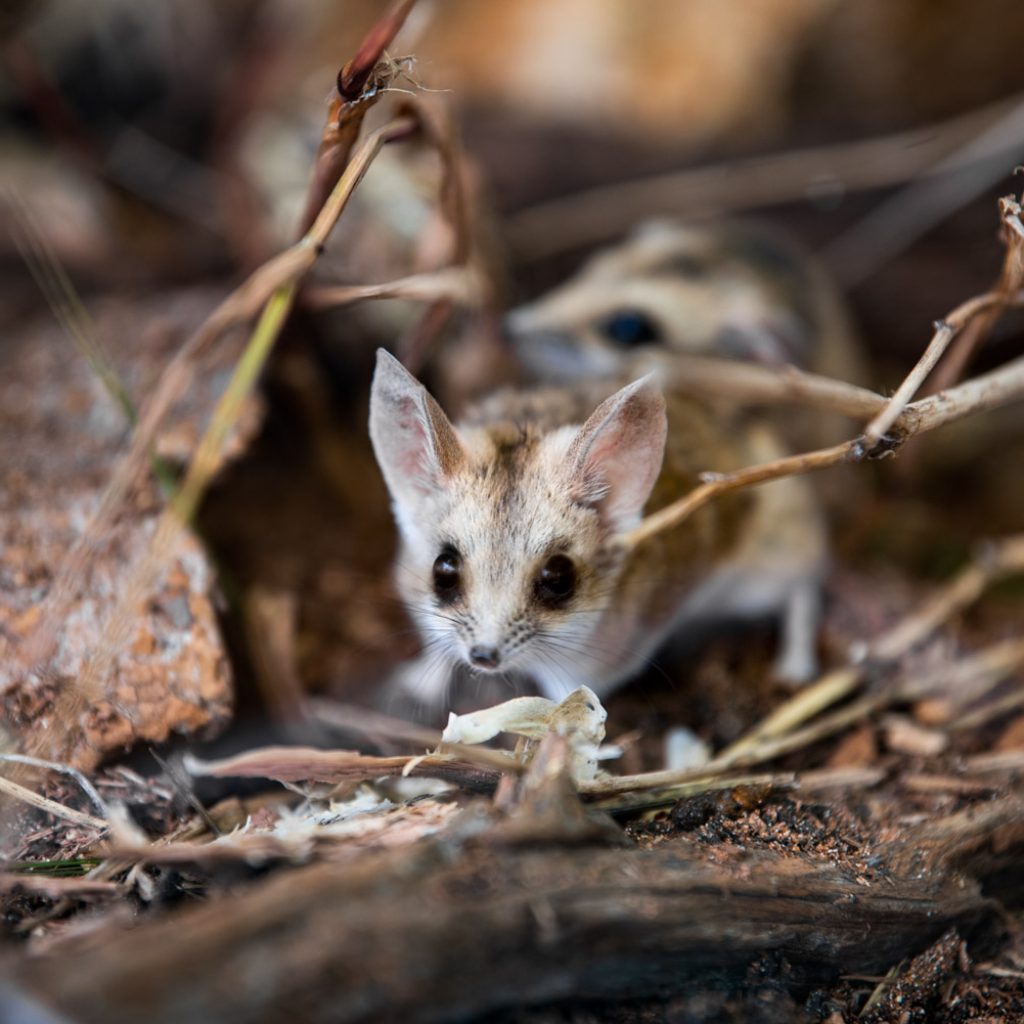Saving landscapes under threat
The Western Riverina focal landscape encompasses 155,000 ha of central northern Victoria.

Fat-tailed Dunnart. Image: Annette Ruzicka.

In the face of the biodiversity and climate crises, it’s more important than ever that scarce resources are placed in the areas where they can have the most impact. Trust for Nature’s Statewide Conservation Plan, released in 2022, identifies 18 landscapes across the state that will make the greatest contribution towards conservation on private land, helping to save vulnerable plants and animals.
The Western and Eastern Riverina encompass some of the most highly-cleared parts of Victoria where there is an urgent need to protect as much remnant habitat as possible to improve the survival prospects of the species that live there.
In the Western Riverina focal landscape, centred on the Patho Plains, the Murray floodplain and the lower Avoca and lower Loddon floodplains, the Trust’s priority is to continue protecting and managing the nationally endangered Northern Plains grassland community, along with threatened woodlands and wetlands.
With a total area of more than 150,000 hectares, the landscape of Plains Grasslands, Chenopod Shrublands, Riverine Grassy Woodlands and Wetlands is an important home to animals and plants such as the Pale Sun Moth, Australian Painted Snipe, Striped Legless Lizard, Fat-tailed Dunnart, Red Swainson-pea, Cane Grass and Ridged Water-milfoil.
It’s also the last stronghold for one of the planet’s most critically endangered birds, the Plains-wanderer—a quail-like bird totally dependent on these grasslands and appropriate management.
With nearly 90 per cent of this landscape’s remaining native vegetation existing on private land, landowners are critical to saving this special bird and the last of the grasslands.
Trust for Nature Conservation Science Advisor Doug Robinson said: “Working closely with landholders, North Central Catchment Management Authority, Traditional Owners, Parks Victoria, the Victorian Government and other partners, the Western Riverina is a landscape where there has been a huge increase in the extent of protected areas on public and private land over the last twenty-five years, totalling more than 7000 ha of habitat now protected forever.”
“However, it is critical to continue our protection program here to build on these existing protected areas and prevent further loss of these threatened ecosystems and species.
“We are optimistic that if we continue to have funding in place to support landowners to protect and manage their land for nature as well as for sustainable farming practices, we can keep making a huge difference there.”
The same approach also applies in the Eastern Riverina focal landscape, located in northern Victoria between Barmah, Shepparton, Euroa, Benalla and Yarrawonga. The almost 170,000 hectares of Plains Woodlands, Riverine Grassy Woodlands, Box-ironbark Forests and Dry Forests remaining within this landscape is critical habitat for Squirrel Gliders, Swift Parrots, Grey-crowned Babblers, Lace Monitors, Yarran Wattle, Small Scurf-pea and Euroa Guinea-flower.
“There is a real urgency in protecting and looking after what’s left of this landscape before it gets transformed into more intensive land uses,” Doug said. “In the thirty years or so that I have been working in this area we have seen Bush Stone-curlews plummet in numbers to a point close to extinction; and populations of many threatened plants have declined due to drought, weed invasion, over-grazing by herbivores and a lack of appropriate biomass management. Like most of our focal landscapes that are located in agricultural landscapes, time is running out for these species and their habitats unless we massively scale up our protection and active management efforts with willing landholders and partners.”
Trust for Nature’s Statewide Conservation Plan provides goals and targets for strategic conservation of ecosystems and species on private land across Victoria over the next decade.
“For any organisation to be effective it needs to know where it’s going and where it wants to have the most impact,” Doug said. “This plan aims to do just that. The challenge now for all of us is to help make it happen at scale and soon, while we still have the chance to improve the health of these priority places and species.”